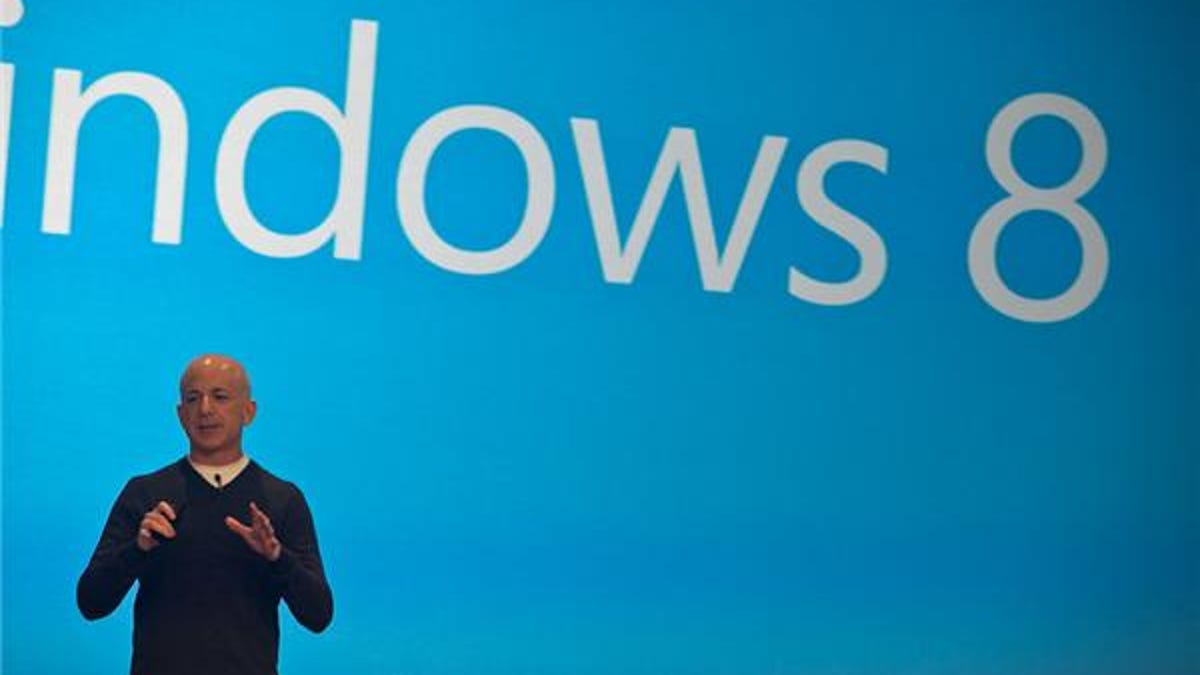Ballmer decided Windows chief Sinofsky was too divisive
Details of what led to to the abrupt departure of the man who delivered Windows 8 are still trickling out. But sources say Microsoft's CEO knew he had to make a change.

Microsoft Chief Executive Officer Steve Ballmer decided he had had enough of Windows Division President Steven Sinofsky.
Sinofsky had developed a stellar reputation for shipping quality products on time. And he streamlined the management structure in the gigantic Windows division so that it hummed and produced the latest version of the company's flagship product on a tight deadline to solid, if not spectacular, reviews.
But a day after Sinofsky's sudden departure from Microsoft, it's also clear that Ballmer recognized that the Windows leader was too divisive of a figure to continue on at the software giant, where collaboration among groups is taking on increasing importance.
A Microsoft executive familiar with the thinking of senior management said there was no single event that led to Sinofsky's exit. Instead, relations between Ballmer and Sinofsky frayed as development on Windows 8 progressed.
Microsoft declined to make either Sinofsky or Ballmer available for comment. And while sources say the two executives had several disagreements in recent months, there was little chance any change would happen before Windows 8 launched on October 25.
The final decision about Sinofsky's exit was made shortly before the company announced the news Monday night. That's because Sinofsky was an officer of Microsoft, and regulatory rules require the company to immediately disclose material management changes. Even though Ballmer wanted Sinofsky out, the company said the decision was ultimately mutual.
While Windows 8 has been available for less than two weeks, Microsoft will no doubt sell hundreds of millions of copies as consumers buy new PCs. How it fares in the tablet business against Apple's iPad will be a bigger test. And it's too early to determine that outcome.
The biggest reason for Ballmer's consternation was his concern that Sinofsky didn't work well with executives in other groups. There's a growing realization in the executive suite that Microsoft needs all its divisions, particularly Windows, Windows Phone, and the entertainment group that makes the Xbox, to work well together in order to compete in the consumer electronics marketplace against Apple and Google.
"Ballmer is on this big kick to get different pieces of the company working together and Sinofsky had his middle finger extended," said a former Microsoft executive.
There are legitimate reasons for Sinofsky's keeping other groups at an arm's length. Developing Windows is extraordinarily complex, with thousands of developers, testers, and program managers working in unison to make milestones and meet deadlines. Working with other groups, whose development schedules differ, creates dependencies beyond the control of Windows executives. They can gum the product development machinery that Sinofsky so skillfully crafted.
That focus on process has won Sinofsky many fans both inside and outside Microsoft. His Facebook post about his departure is brimful with praise. And Microsoft developer Dare Obasanjo blogged that he considered Sinofsky "a role model of executive leadership and a source of my faith in the future of Microsoft."
But Sinofsky engenders antipathy that's just as strong, particularly from executives whose strategy ran counter to his own. Stories about internal battles with Sinofsky aren't new at Microsoft. Sources familiar with the discussions surrounding the naming of Sinofsky to run the Windows division said it was an area of "concern" for Ballmer and Microsoft Chairman and co-founder Bill Gates.
"Bill and Steve both knew Steven's flaws," said one former senior leader.
But they were willing to overlook them as he fixed the problems in the Windows group, which was in disarray after the disastrous release of Windows Vista. Turning Windows around, though, helped Sinofsky amass more political clout. Windows, after all, is the source of much of Microsoft's considerable power in techdom.
Sinofsky, according to one former senior executive, threatened to quit more than once over key strategic decisions, if they didn't go his way. Ballmer was in the tough spot of acquiescing, lest he lose the executive who controls Windows.
"They bet on Steven and they kept betting bigger and bigger," the former executive said.
In the process, top Microsoft executives who clashed with Sinofsky and lost left the company, including top thinkers such as former Chief Software Architect Ray Ozzie and respected leaders such as former Server and Tools Division President Bob Muglia.
Now, Sinofsky is gone too.

